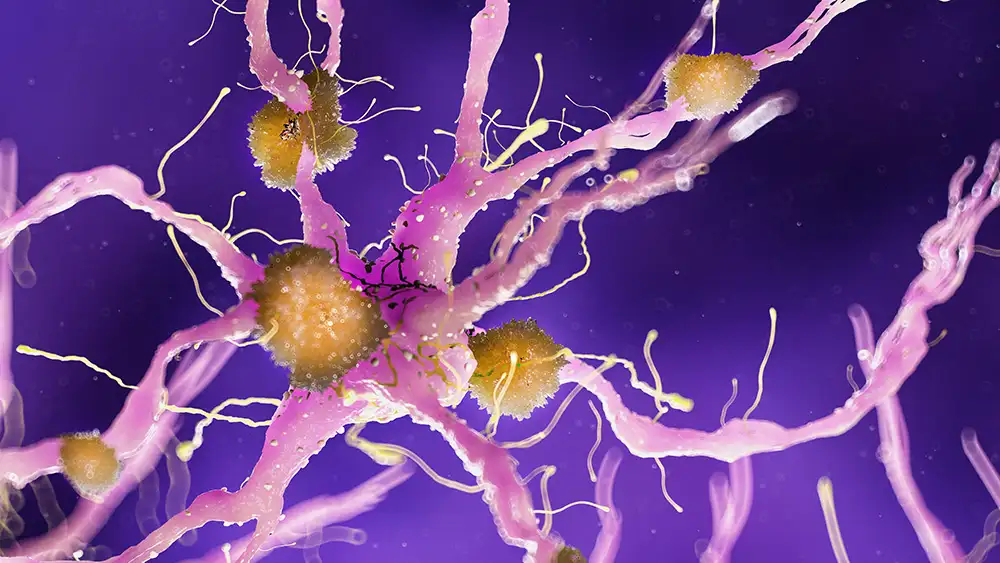The pharmaceutical industry has long focused on key therapeutic areas – with oncology and rare disease having seen unprecedented innovation over the last decade. The former presents a massive market that is only expected to grow as populations live longer, while the latter presents favorable conditions for the development of orphan drugs that face little competition. However, multiple factors are spurring growth in a relatively neglected area – the Central Nervous System, and the psychiatric or neurological diseases that affect it. This article will explore these – with a particular focus in drug discovery and treatment modalities that can contribute to progress in the CNS space.
CNS Disease: A Growing Burden
According to the Global Burden of Disease project, psychiatric and neurological disorders accounted for over 8.76% of the total Disability-Adjusted Life Years (DALYs) worldwide – a statistic that combines the deaths from and the years lived with disease. These include depression, Alzheimer’s, anxiety, ADHD, headaches, and others. The statistic likely remains an underestimate – mental illness has long suffered from invisibility and underreporting. With growing awareness around the field of psychiatry and mental health, the recognition that these are conditions that can benefit pharmacological interventions is on the rise – and the industry has taken note.For comparison, HIV accounts for 1.88% of worldwide DALYs. While diagnosis remains challenging in itself, new methods in genomics, liquid biopsies and brain imaging promise to ameliorate these.
Small Molecules in CNS Disease
The classical workhorse of the pharmaceutical industry, small molecules have been the default, most drug-like treatment modality since the dawn of modern medical practice. Over the last decade, small molecules have been facing stiff competition from competing treatment methods – especially biologics, which promise a wider breadth of drug targets. Yet small molecules retain unique advantages in CNS disease: their low molecular weight and ability to balance lipid solubility with aqueous solubility makes them ideal for crossing the Blood Brain Barrier (BBB). The agents to watch in the psychiatric pipeline are all small molecules, which can provide a therapeutic area to pivot towards for companies facing increasing competition from novel modalities in other disease spaces.
However, small molecules face challenges elsewhere: animal models are often bad predictors for efficacy in CNS disease, with development pipelines showing high attrition when transitioning to clinical studies. There are multiple reasons for this – one may even ask whether it is possible to meaningfully replicate brain diseases, particularly highly behavioral and social conditions such as anxiety or depression, to animals with vastly inferior brain capabilities. The impact of the placebo effect is also tremendous in psychiatric trials. These challenges can be overcome with improvements in clinical trial design and advancements in technology that can meaningfully illustrate and predict pharmacodynamics – machine learning and AI are already making strides in this regard.
Psychedelics
While structure-based drug discovery offers unique potential, we have long known about entire classes of substances which can act upon the Central Nervous Systems. These include cannabis, psychedelic drugs, and others. The war on drugs has led to a marginalization of this category of drugs in the scientific community, but this is now changing. Ketamine, psilocybin, LSD, MDMA, Ibogaine and others have all experienced a clinical re-discovery, with multiple clinical trials hoping to interrogate their clinical benefits – we explore the subject in-depth in a separate article, as well as an interview with Albert Garcia-Romeu from the John Hopkins Center for Psychedelic and Consciousness Research. Multiple companies seek to refine and optimize the active ingredients found in these substances, and provide their own formulations to bring to the market.
Explore novel tech and collaborative solutions on your journey to new CNS products with IQVIA, a leader in the field….Read More
Biologics: Where From Here?
Crossing the blood-brain barrier is nigh impossible for biologics – because of their large molecular weight and high hydrophilicity. This places them in a very restrictive environment in the CNS space – with nearly no direct mode of action available for psychiatric disease. Instead, the biologics space has had to focus elsewhere. The first biologic treatment for CNS disease was interferon-beta, which is suspected to reduce the expression of proinflammatory cytokines while promoting anti-inflammatory parts of the immune system, such as CD56 natural killer cells. Tandalizumab is also an example of a monoclonal antibody which can have an effect on multiple sclerosis by lowering the ability of white blood cells to cross the BBB – although it faced nearly a decade of controversy and market withdrawals because of adverse effects in patients who were taking other treatments (including interferon-beta) as these had not been studied.
Outside of multiple sclerosis, there remains a dearth of any biological treatments that are approved for use in neurological disorders. New approaches that may yield improved results include targeting BBB receptors, or by improving the BBB permeability through ultrasound or chemical disruption. Direct administration to the CNS overcomes the BBB as well – These raise alarming safety concerns however – and will take a long time to translate to the clinic as those are addressed, leaving targeted biologics as the only feasible option. The growing field of nanomedicine promises to provide new vehicles of delivery for biologics to the brain – providing a new avenue for research.
Future Directions
While we have explored the main avenues of drug modalities that are currently facing intensive research, it is important to remember that drug candidates are only one part of the equation. Our understanding of disease mechanisms and pathophysiology are also critical to the success of candidates – regardless of their drug class. Psychiatric disorders face nebulous definitions and diagnostic criteria that serve to shelter very heterogeneous causes. But more classical neurological diseases such as Alzheimer’s suffer from the same issues. We know the hallmark symptoms of Alzheimer’s, such as amyloid plaques – but we are not aware of what causes the disease. Improvements in disease pathology and diagnostics will not only accelerate drug discovery, but they will also improve the timing of treatment – which can be critical for neurodegenerative disease. As interest in the CNS and neurological disorders ramp up, these will be crucial questions to answer. It is clear that each drug class brings unique advantages to the table – but they all come with their own challenges; the large, and growing, market size and unmet needs it presents compel the industry to commit further resources.
Nick Zoukas, Former Editor, PharmaFEATURES
Join Proventa International’s Drug Discovery Biology Strategy Meeting in San Francisco to further explore recent developments in drug discovery – as well as discuss novel strategies and cutting-edge technology with leading industry stakeholders. Lead the discussion, forge new collaborations and advance your journey in the life sciences with us!

Subscribe
to get our
LATEST NEWS
Related Posts

Neuroscience & Neuropharmacology
Sygnature Discovery Revolutionizes Neuroinflammation Research with In Vivo LPS Model
Innovative LPS model unveils new possibilities for understanding life-limiting neuroinflammatory conditions.

Neuroscience & Neuropharmacology
Unveiling Alzheimer’s Complexity: Decoding the Elusive Amyloid Beta Fibrils
Lecanemab found to confer shielding effect against detrimental effects of unbound amyloid beta fibrils.
Read More Articles
Synthetic Chemistry’s Potential in Deciphering Antimicrobial Peptides
The saga of antimicrobial peptides unfolds as a testament to scientific ingenuity and therapeutic resilience.












